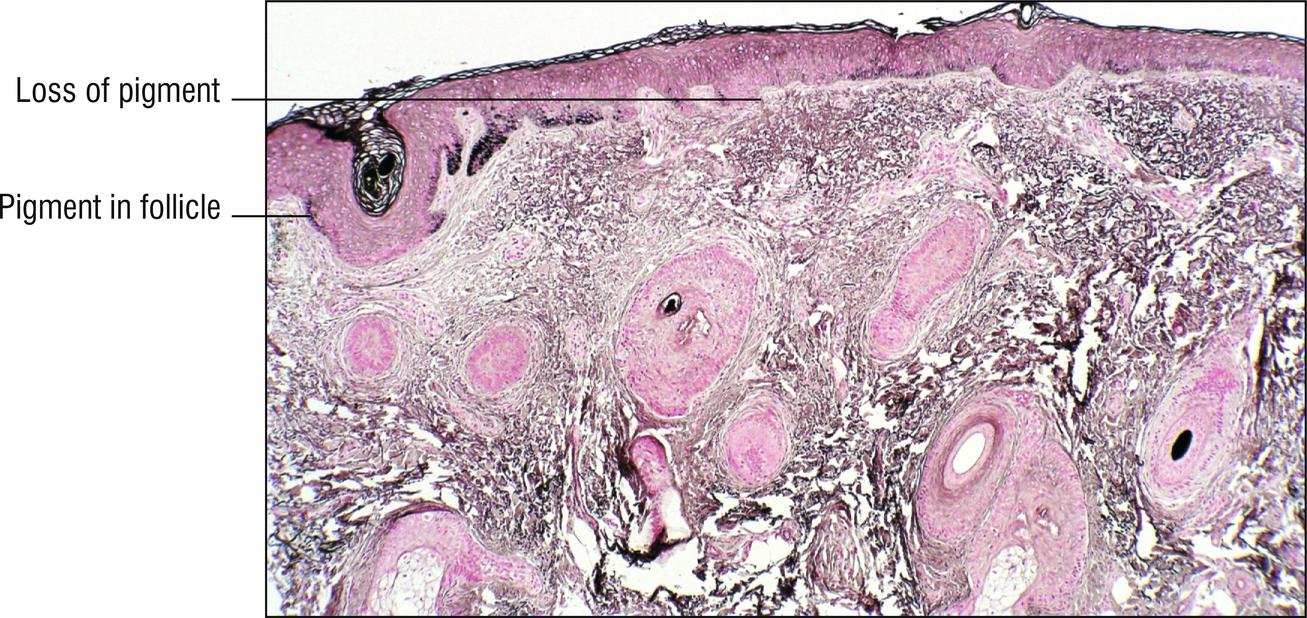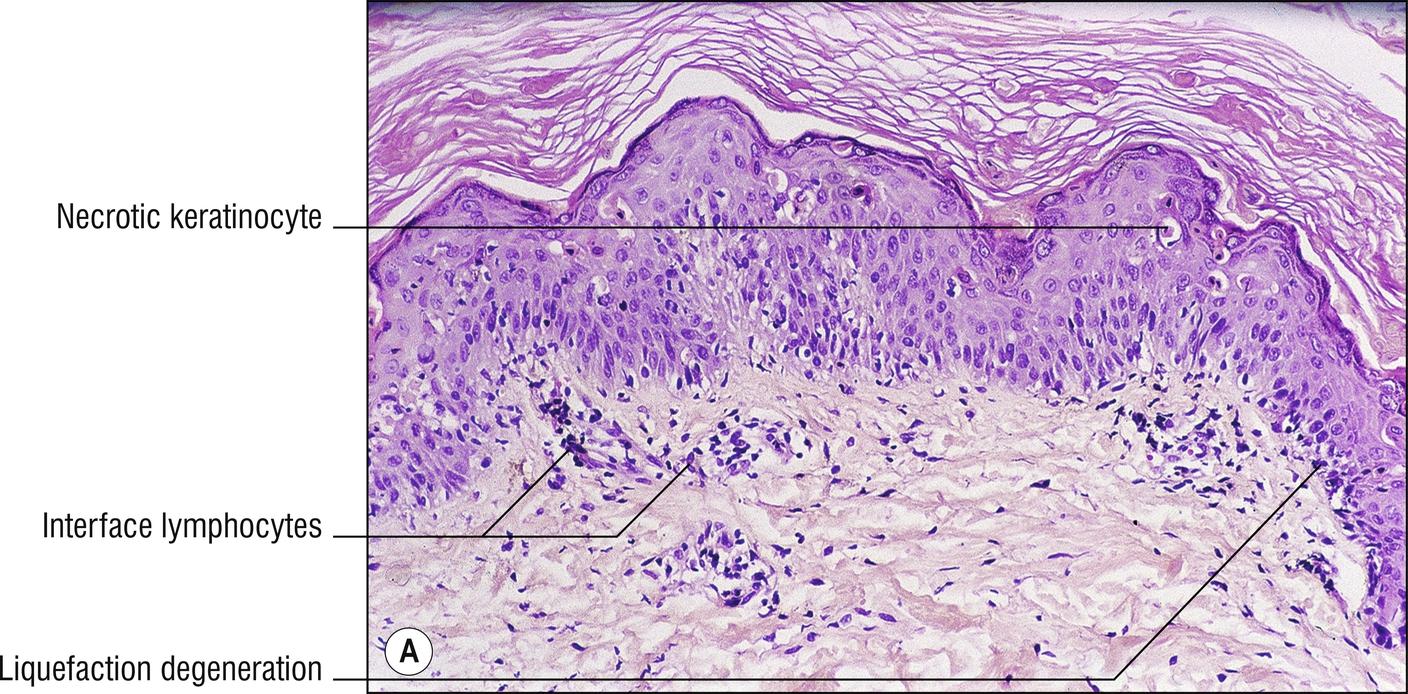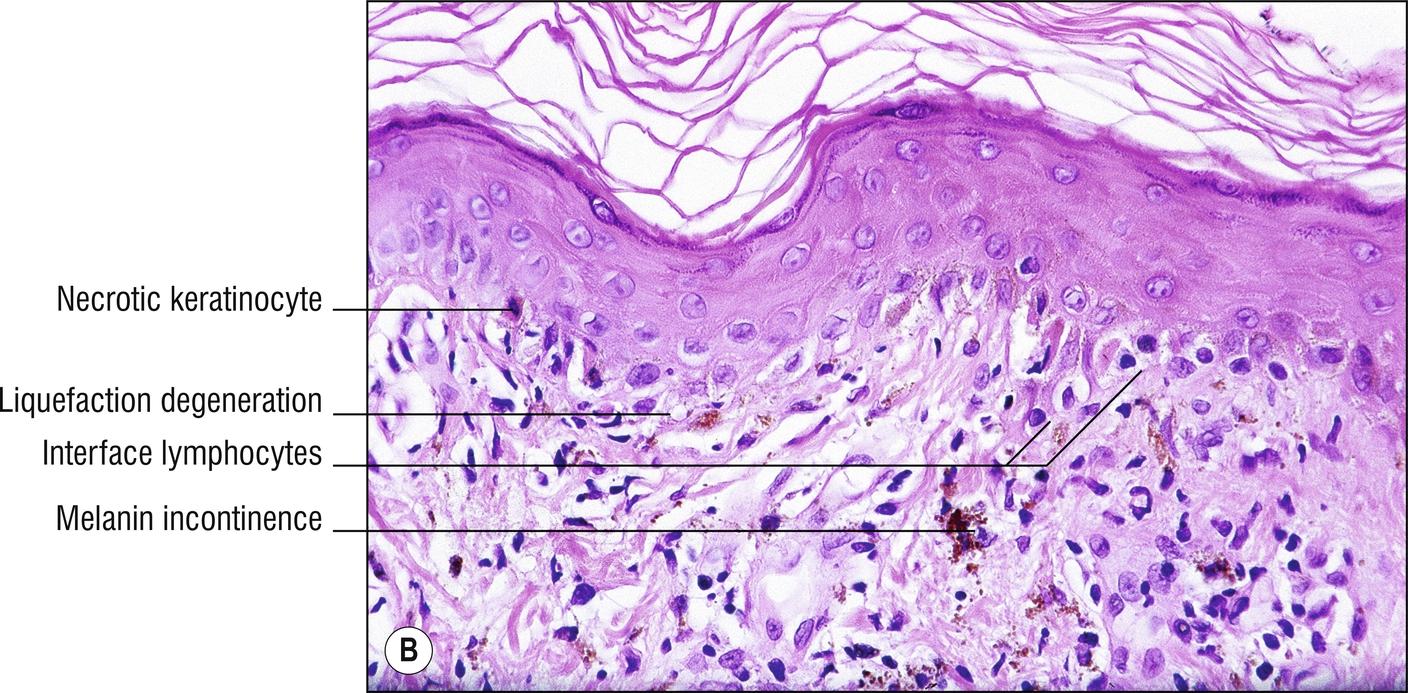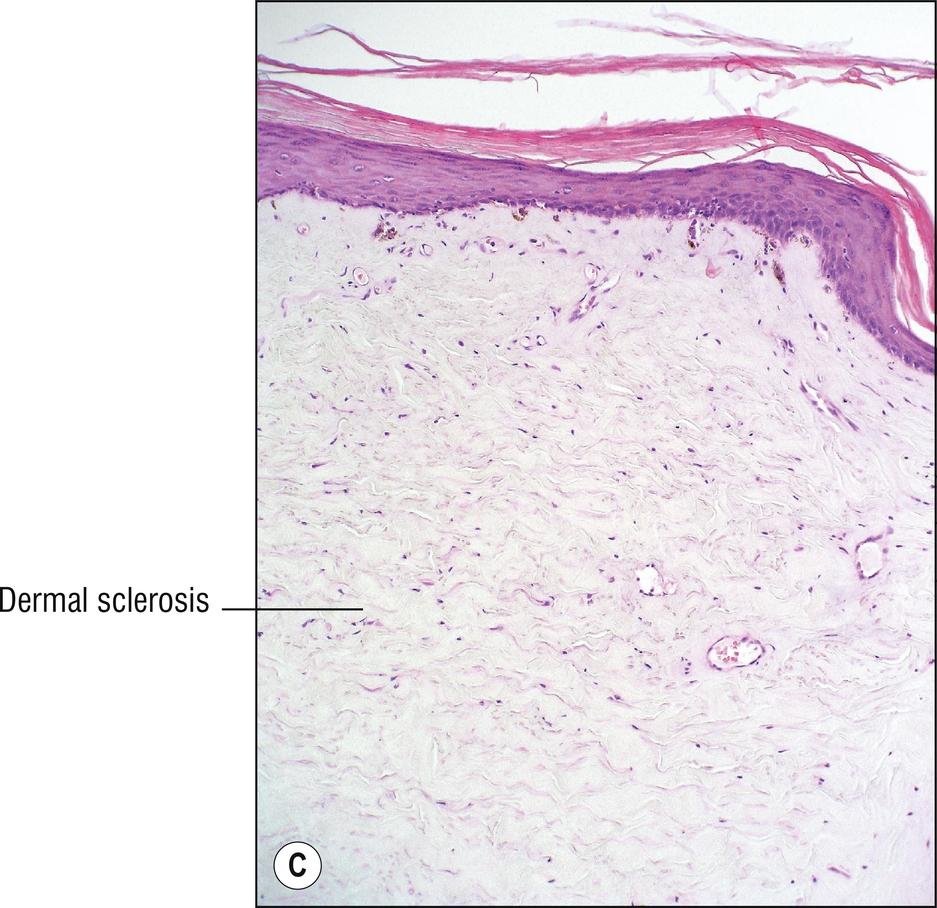Physical Address
304 North Cardinal St.
Dorchester Center, MA 02124
Rare autosomal recessive disorder due to a defect in zinc absorption (mutation in intestinal zinc-specific transporter SCL39A4). Decreased zinc levels can be documented in the serum. Infants develop perioral (1.82), groin (1.55), perianal (1.108), scalp (1.124), and acral eczematous plaques (1.29), with diarrhea (1.49), alopecia (1.4), glossitis (1.139), and secondary infection with bacteria and Candida (13.4).
Scale crust often , with confluent parakeratosis (1.104), fibrin, and neutrophils in the stratum corneum (1.89), and sometimes bacteria and Candida
Hypogranulosis (1.63)
Psoriasiform hyperplasia , spongiosis (1.132), sometimes intraepidermal vesicles
Pale (1.99) or dyskeratotic epidermis (1.27)
Perivascular lymphocytes (1.109)
Other diseases with psoriasiform dermatitis (1.119), especially eczema and other nutritional deficiencies (2.1). Definitive diagnosis depends upon the documentation of deficiency in the serum and and not upon biopsy findings.
(see Fig. 17.2 )

Common autoimmune depigmentation of skin, especially around the eyes , mouth , genitals , and hands . Associated with other autoimmune diseases, especially thyroid disease (1.138).
Decreased or absent melanin and melanocytes in basal layer in well-developed lesions. This may be difficult to appreciate with H&E staining. Special stains for melanin or melanocytes may be needed
Hyperkeratosis and acanthosis can sometimes develop to compensate for loss of pigment
Perivascular lymphocytes (1.109) only in early lesions
Vogt–Koyanagi–Harada syndrome: aseptic meningitis, followed by uveitis (1.41) and dysacousia (a type of hearing impairment). Vitiligo and alopecia areata (10.9) are common.
Post-inflammatory hypopigmentation: decreased melanin in basal layer, but melanocytes are present.
Albinism (11.9): present since birth, melanin absent from basal layer, but melanocytes are present.
Piebaldism (11.9): present since birth, white forelock. Many other diseases may produce hypopigmentation (1.150).
(see Fig. 17.3A–C )



Somewhat common disorder in stem cell transplant patients, in which immunocompetent lymphocytes in the transplant attack the host. Less common in other forms of transplantation, blood transfusions. Human herpesvirus (HHV6, HHV7), cytomegalovirus, Epstein–Barr virus, or parvovirus may play a role, especially in autologous GVH. Congenital GVH occurs when maternal lymphocytes cross the placenta and react against an immunodeficient fetus. Scaly erythematous patches or plaques (often initially on acral skin), later elsewhere, commonly between days 10 and 21 after bone marrow transplant. Involvement of (1) skin, (2) gastrointestinal tract with diarrhea (1.49), and (3) liver with elevated liver function tests (1.75). Severity of GVH is sometimes graded as below.
Epidermal atrophy sometimes (1.9)
Mild spongiosis sometimes (1.132)
Grade 1: liquefaction degeneration (vacuolar alteration) of the basal layer
Grade 2: dyskeratotic or necrotic keratinocytes, sometimes with adjacent lymphocytes (“satellite cell necrosis”), sparse perivascular or interface dermatitis, melanin incontinence (1.79) sometimes
Grade 3: subepidermal microvesicle
Grade 4: frank subepidermal blister (1.147), complete epidermal necrosis in severe cases
Chronic GVH: as opposed to changes of acute GVH described above, usually chronic GVH is defined as the eruption more than 100 days post-transplant . It is more likely to be lichenoid (1.72), with more poikiloderma (1.112) and sclerosis (1.125) later.
Follicular GVH: clinically and histologically primarily around follicles.
Bullous GVH: appears similar to toxic epidermal necrolysis (3.2).
Autologous GVH and eruption of lymphocyte recovery: patients with transplants from their own marrow (autologous) theoretically should not develop a true graft versus their own host tissue. These patients, and those with the eruption of lymphocyte recovery, are thought to have a complex imbalance of immunologic factors and a response to various cytokines. The eruption of lymphocyte recovery presents as macular erythema at about the same time as acute GVH, accompanied by fever at about the time the peripheral white blood cell count is recovering as the graft takes. The histology is similar to acute GVH.
Acute GVH is nearly identical with erythema multiforme (3.2), but the infiltrate tends to be sparser in GVH, and the clinical features are different.
Other diseases with interface dermatitis (1.64).
Other diseases with dyskeratotic or necrotic keratinocytes (1.27, 1.87).
Drug eruption, common in these same patients, may be nearly impossible to distinguish (3.5). Eosinophils are not reliable in helping to tell the difference.
Become a Clinical Tree membership for Full access and enjoy Unlimited articles
If you are a member. Log in here